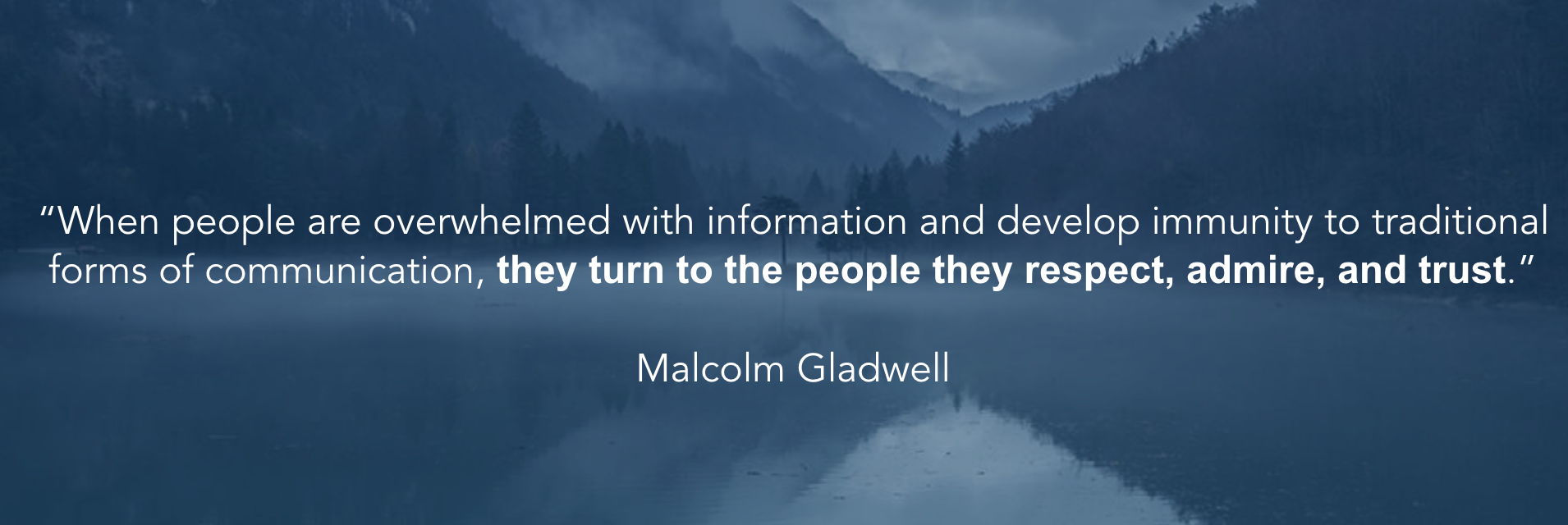I’ve been traveling a lot to explore various countries and learning new skills. Whether it was going to Australia to trek some the mountains of Tasmania or flying to Colombia to learn 30 hours of salsa dancing, I’ve become a digital nomad to satiate my wanderlust.

One problem though: last month, I realized my travel bag wore down, and I was in the market of purchasing a new bag. My one caveat: this new bag would have to be super durable and last me for at least 5+ years.
Naturally, I went to Google and started searching for ‘best digital nomad backpacks’ and narrowed my search to about 4 options, one of which was Minaal. I clicked on their website and liked what I saw. A few minutes after looking at their options, I stumbled upon a page called “Pages of Love.”
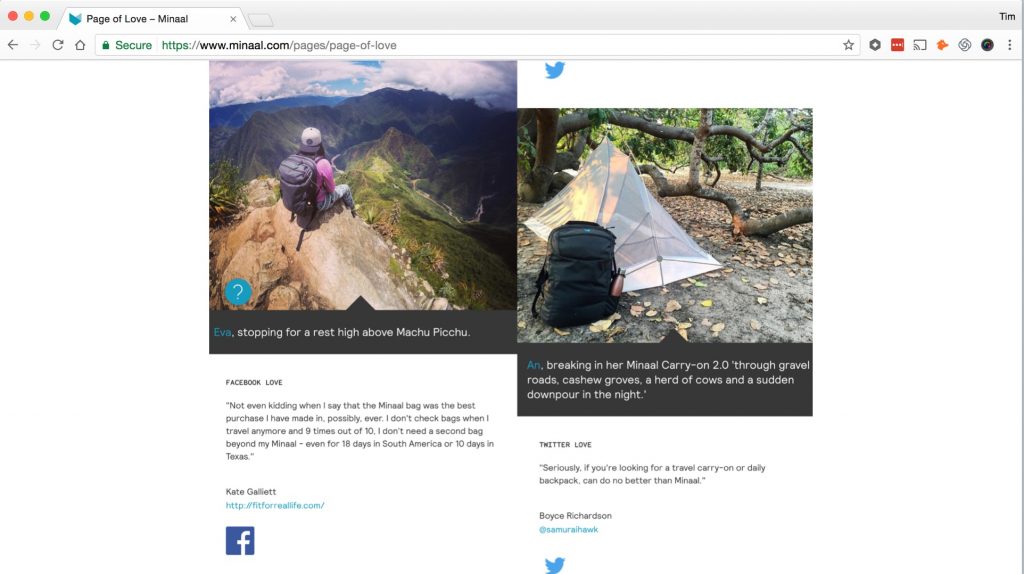
In this page was a beautiful gallery and social media testimonials from real customers on their experience with their bag. Scrolling through a few of these photos, I really enjoyed what I saw, built more trust with the Minaal brand, and took the plunge to purchase the $300 bag within 20 minutes.
Thinking I was crazy to make a big purchase like that so quickly, I did another Google search on other Minaal customers experience and found another customer’s story of purchasing the bag within 10 minutes — whew! Of the 5 main reasons that convinced him to make the purchase, #3 stood out to me: real customer testimonials. The real customers’ photos from social media Minaal was willing to showcase on their website convinced us two buyers to take the plunge, and after 1 month of purchasing, I am still very satisfied with my purchase.

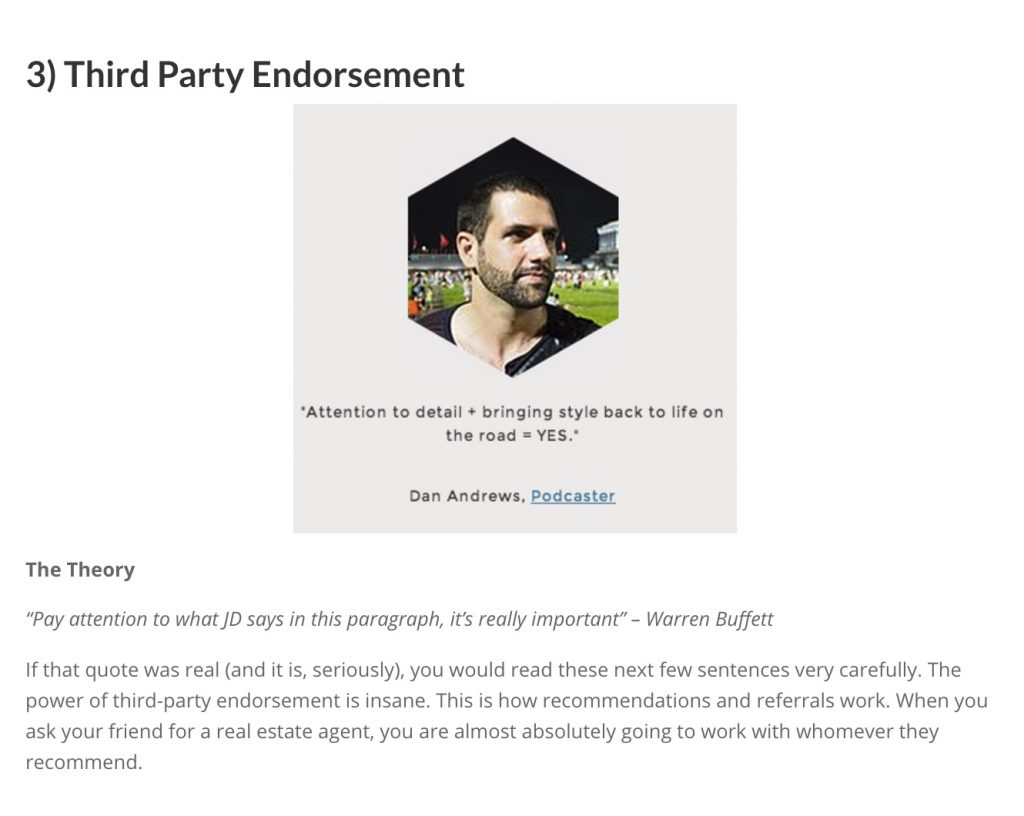
“Half the fun of bringing gear into the world is seeing what our users get up to with it. We wanted to create a space to share their stories and the awesome images that go along with them. At this point there’s way too much to showcase in one spot so ‘Page of Love’ content is all over Instagram and our other social channels.” – Jimmy & Doug, Co-Founder at Minaal
Why UGC Marketing is on the Rise
In the last 50 years, the amount of ads and brand content we get exposed to on a daily basis has increased from 500/day to ~5000/day. Unbelievable? Think through your day. When you first wake up, you touch your alarm clock. Logo on it? Ad. When you go brush your teeth, you touch your toothbrush and toothpaste. Logo on them? Ads. When you grab your coffee and start commuting to work, what do you see? Ads on your coffee cup and on the freeway or bus or subway. The list goes on as you go through the rest of your day.
We all know there is a lot of marketing noise today. Yes we’ve trained our brains to tune them out as consumers, but that’s bad news for brand marketers.
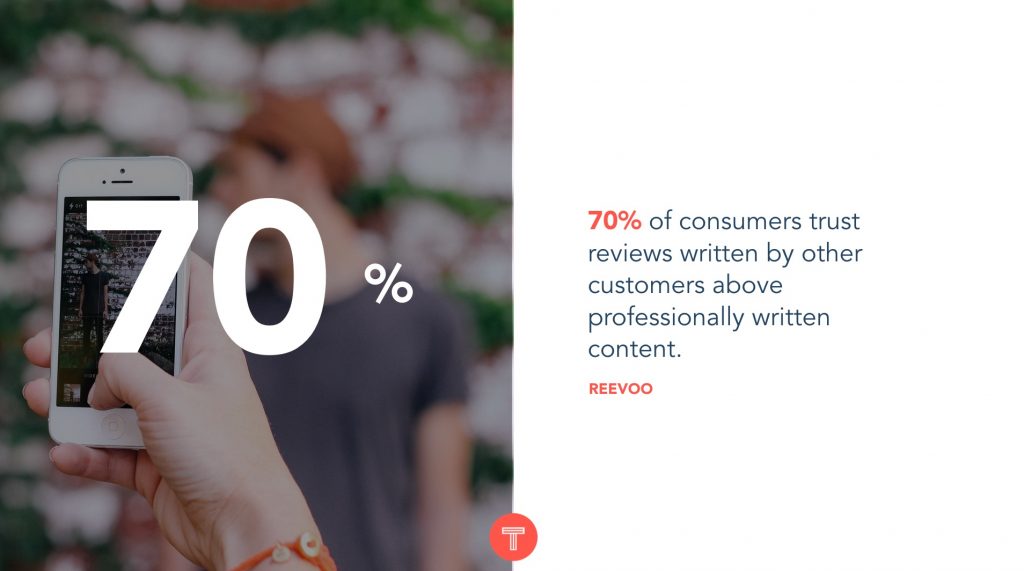
Why is this the case? One word: Trust.
According to a long studied Gallup Poll, consumers were asked which profession they thought practiced integrity. While the medical profession ranked high at 30% (% of consumers believing they practice integrity), advertising and marketing landed below Congress, at a mere 4%. And when diving deeper into why marketers lie, 70% of them do so because they want to “sell more effectively” or “make themselves look better” in front of their bosses so they hit their marketing goals.
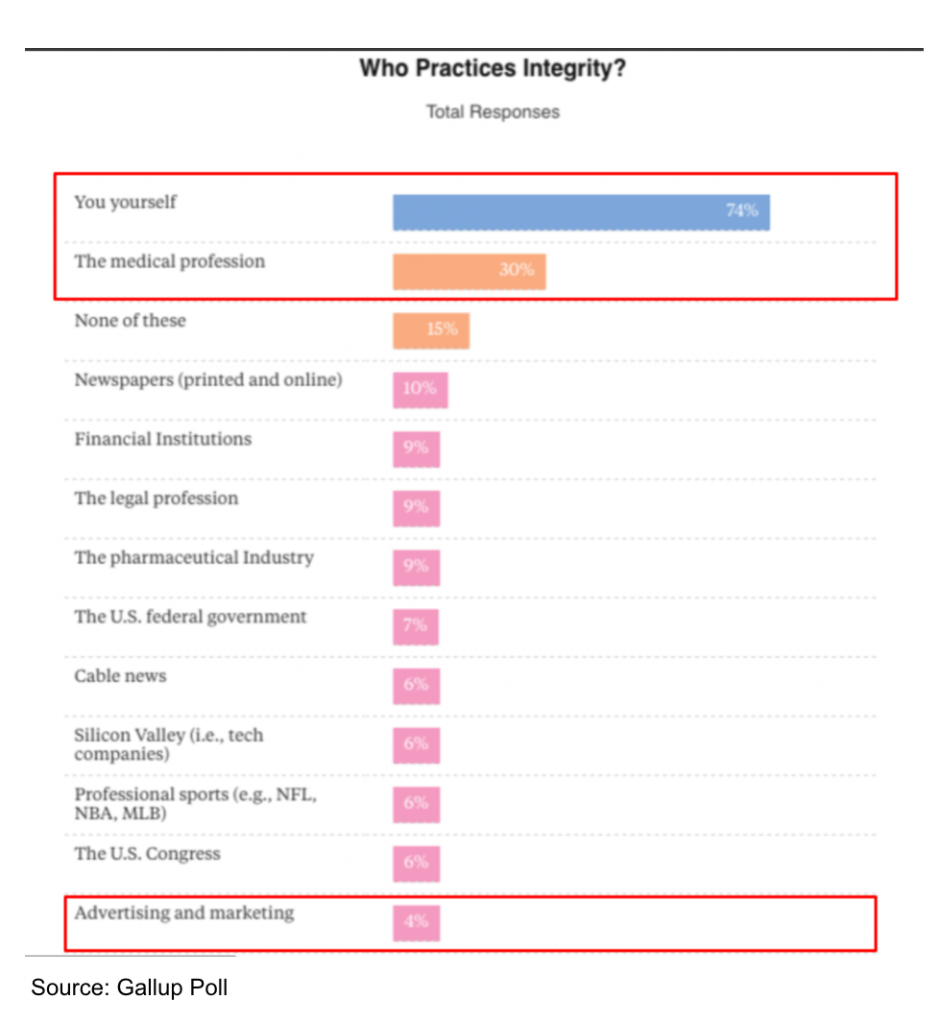
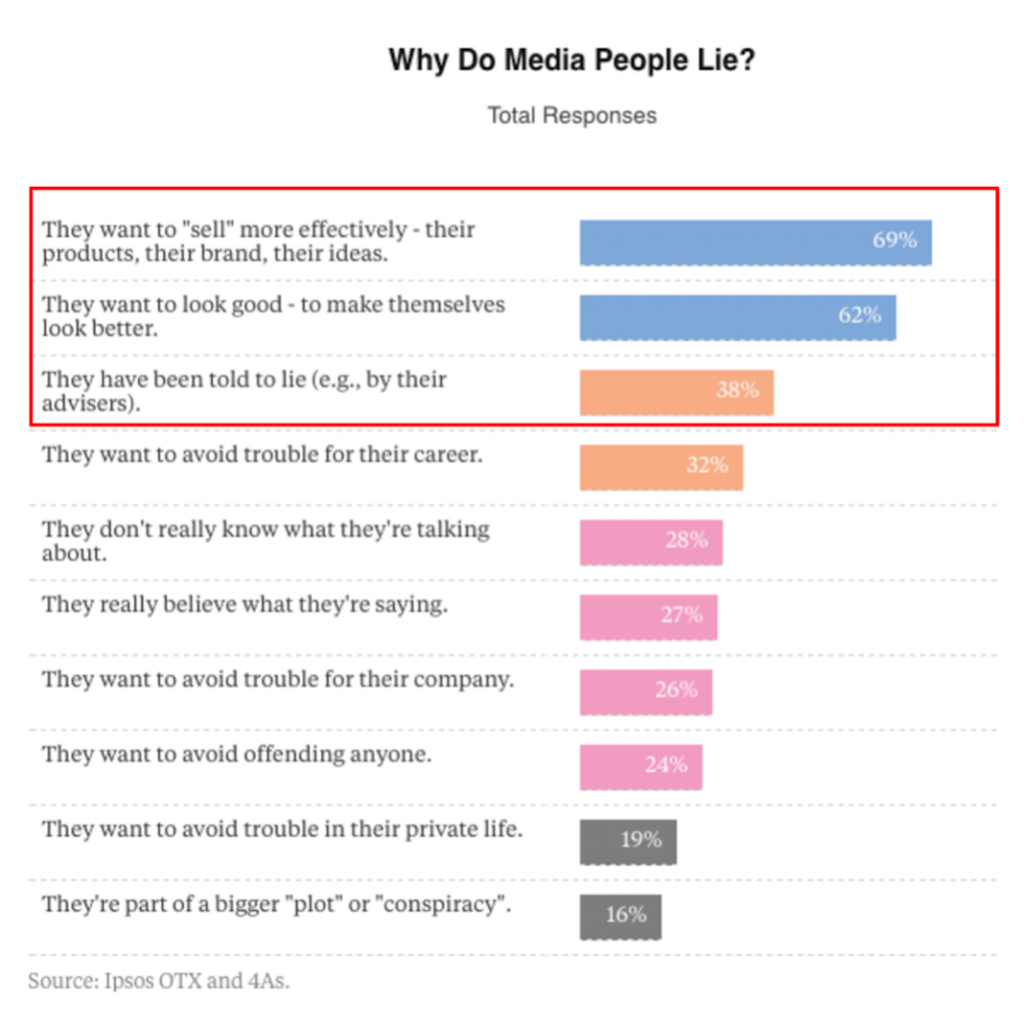
This is a big problem for consumers. The more this happens, the more we will tune out.
That’s why marketing is shifting. No longer can we rely on sneaky tactics like the snakeoil salesman. No longer can we rely on fictional characters like the Marlboro Man to sell on behalf of a brand. We are entering into an era of consumer advocates being the real marketers of a brand. Why and how? 2 things: mobile phone + social networks. The combination of those two have unlocked a big medium for us to share our opinions about our experiences or thoughts about a brand.
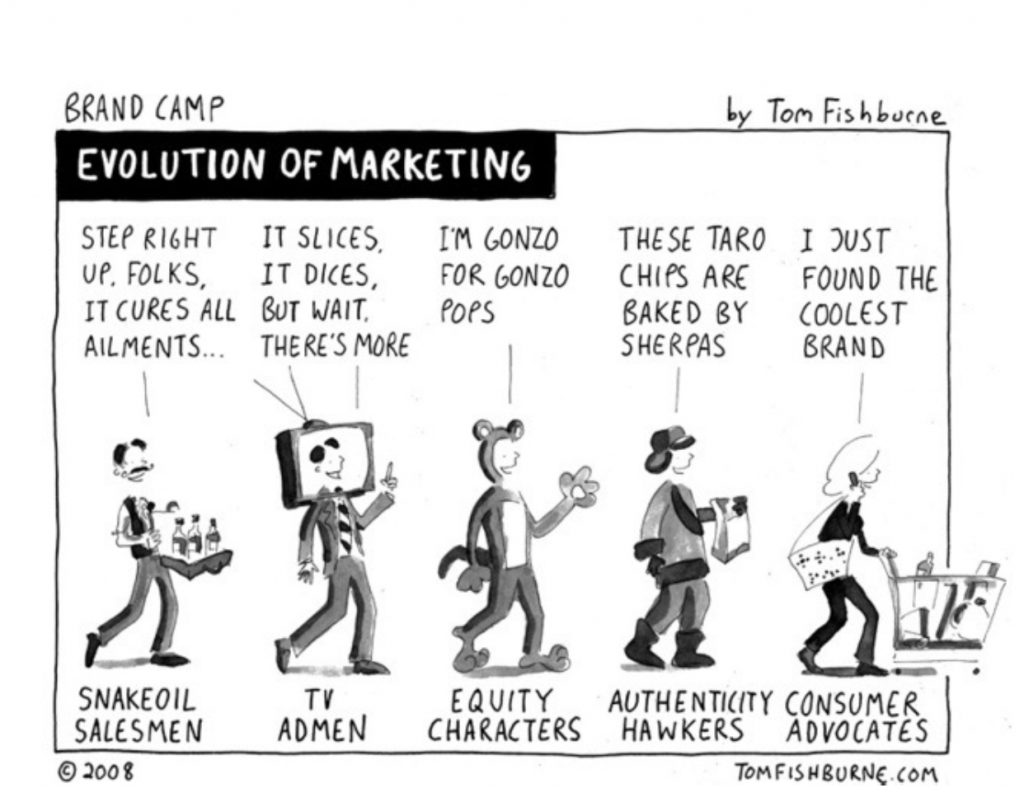
How to Start Harnessing UGC for your Marketing
So how can marketers start to incorporate their customer content into their brand story? Here are two simple ways:
FedEx in the Wild – Embracing Authenticity

When FedEx launched their Instagram presence a couple years ago, they failed. According to their team, they thought all social networks were created equally, so they repurposed content from their other social channels with no real strategy. Results were flat.
So they decided to relaunch their Instagram strategy in 2016, with the core focus that “showcased FedEx in an authentic tone and voice,” pivoting away from stock imagery photography to a fully “user-generated content strategy which let our fans become our global photographers.”
The call-to-action was simple: for all their customers to capture photos of FedEx trucks or planes and share it on their Instagram profile with #FedEx. Their team would go through 1000s of pictures a week to find the best one and re-share on their own Instagram channel after clearing the rights.
The results? Follower growth rate has skyrocketed by 404% in first 9 months! How come?
The FedEx team also saw their customers tell their friends “FedEx found my picture and wants to share it — how cool is that!” The beauty is that this strategy is completely free and decreases content creation costs as their customers are creating the content for FedEx. There is a clear ROI win.
“At the end of the day, by letting our customers and fans across the globe be our brand storytellers, we have been able to transform our perception from being an out-of-reach corporate entity to an authentic, personable friend that our audience can trust.” – Julie Clement Cochran , Global Social Media at FedEx Services
#WeAreCisco – Showcasing Employees
Cisco is a large corporation that may not be the most attractive to future talent. Knowing this, the Cisco social media team set out “to make a personal connection with future talent” by showcasing authentic stories created by their own employees. Why? According to Edelman’s 2017 Trust Barometer, employees are trusted 16 points more than their CEO.
The strategy was simple: ask all employees to showcase how their daily life is like at Cisco on Twitter or Instagram with #WeAreCisco. If the photo was strong enough, they would clear the rights and repurpose onto their own @WeAreCisco social channels and on their ‘Life at Cisco blog.’
Beyond that, they allowed employees to take over their Snapchat and Instagram stories to show what their work is like at Cisco. This creates a very genuine opportunity for future talent to see what it’s like to work at Cisco through the lens of their current employees. No staged actors. No scripted prompts. Raw, authentic stories of what Cisco life is like.
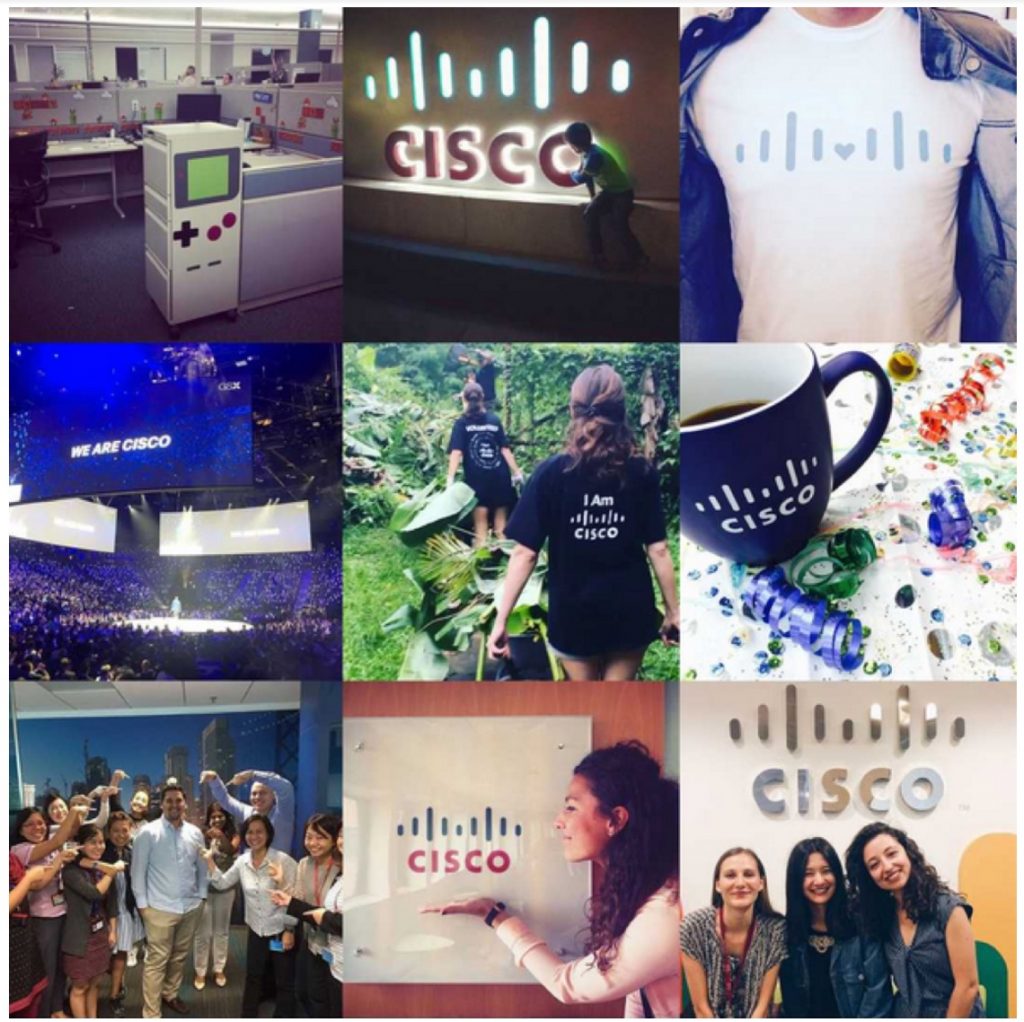
The results? Twitter following ballooned from 5k to 20k followers with 2-3x the industry engagement. Instagram followers grew from 1500 to 15K followers with 2-3x industry engagement rates. Traffic to careers site increased by 6%, which translates to an increase of 500,000 visits per month.
“These strategies not only help us recruit new talent and display the authentic culture at Cisco, but also help us retain and energize existing talent, who feel that they are even more a part of the Cisco story.” – Cisco Culture and Talent team
Leveraging UGC for your customer journey (change)
With all this amazing content created by customers and employees, marketers are starting to leverage that content beyond just their social channels. Why is this important and valuable? Your customers are not just engaging with your brand on the social networks. Social channels are just one stage of the buying journey, and only one part of your brand story.
Remember my buying experience with Minaal? Their integration of customer content into their website helped ease my concerns and accelerated my consideration and purchase decision in my buying journey.

Companies like Loews Hotels are repurposing their customer content across all their owned marketing channels (advertisements, homepage, booking pages, lobby TV screens, email newsletters, etc.) to create more trust with their potential guests regardless of which stage they are in the buying journey.
Case in point:
Joe from Boston wants to book a trip to Chicago and is looking for a nice hotel to stay in. He sees a Facebook ad from Loews that showcases a genuine photo from Instagram of a previous guest Tom in front of the pool sipping on his Mai Tai (Awareness). Joe clicks on that ad and lands on the Loews homepage website where he sees 10 other guest photos from Twitter showcasing fun activities to do near the Chicago Loews Hotel (Consideration). Joe likes what he sees so he goes to the booking page, where he sees 3 other photos from Facebook of what the rooms look like submitted from previous guests (Purchase). He books, visits the Chicago Loews, and enters into the lobby where he sees TV screens highlighting what there is to do, again powered by previous Loews guests’ photos shared on Instagram. He sees how much fun a family is having fun at the pool, visits it, and shares his great photo on Instagram with #travelforreal. Loews messages him to ask if they can get rights to repurpose his great content onto their websites and screens in return for a free one night stay next time he re-visits (Advocacy)!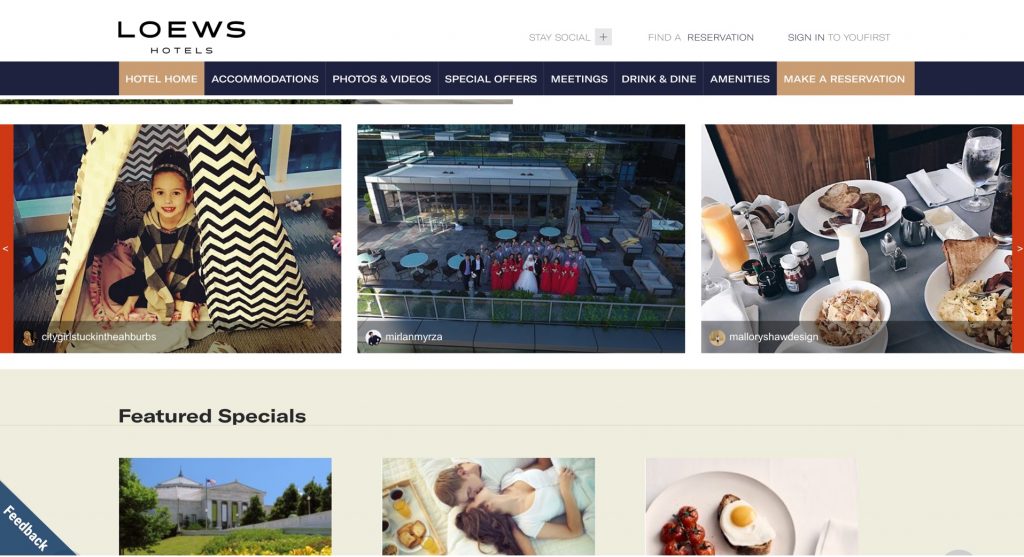
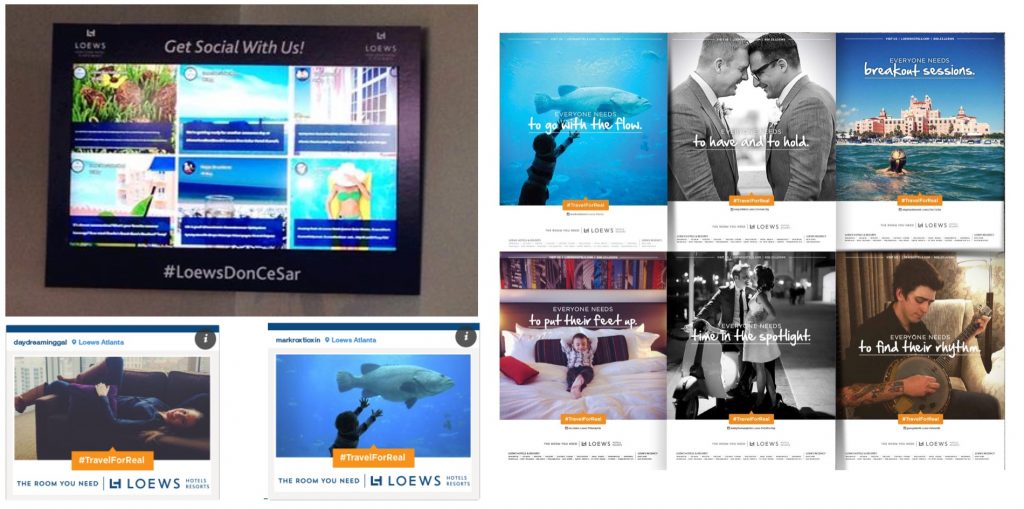
Like marketing tech evangelist Travis Wright says in his argument on why brands should embrace UGC as part of their content marketing strategy, “The utility of UGC transcends individual marketing campaigns and can send a consistent message at every touch point where your customer interacts with your brand. The result is a greater likelihood of increased social engagement, higher conversion rates and better ad performance.”
Within a year, Loews has seen over 35,000 submissions come in, with a 62% engagement rate, and an increase of 35% in site bookings! How? By humanizing their marketing with authentic customer content so potential guests feel confident to book with Loews throughout their buying journey!
“To be a successful brand in this day and age, it’s really important to have an authentic presence on all of your communications — so whether it’s social or anywhere else, we’ve included these images.” – Piper Stevens, VP Loyalty & Marketing at Loews
The Future of Brand Storytelling
Edelman released their Trust Barometer report earlier this year, and the main takeaway was that the general population’s trust in business, government, media, and NGOs has broadly declined. “Media is distrusted in 82% of countries.”
How can brand marketers fix this?
“When people are overwhelmed with information and develop immunity to traditional forms of communication, they turn… to the people… they respect, admire, and trust.” – Malcolm Gladwell
“To climb back from a position of deteriorated trust, and to ultimately restore belief in a system that too many people believe has failed them, institutions must operate as a people-centric, integrated part of the broader societal fabric.” – Edelman Trust Barometer 2017
Our interpretation: humanize your marketing by inviting genuine customer content into all your marketing communications.
David Berkowitz from MRY shared a great chart on how marketers can start shifting their mindset from storytelling to storymaking:
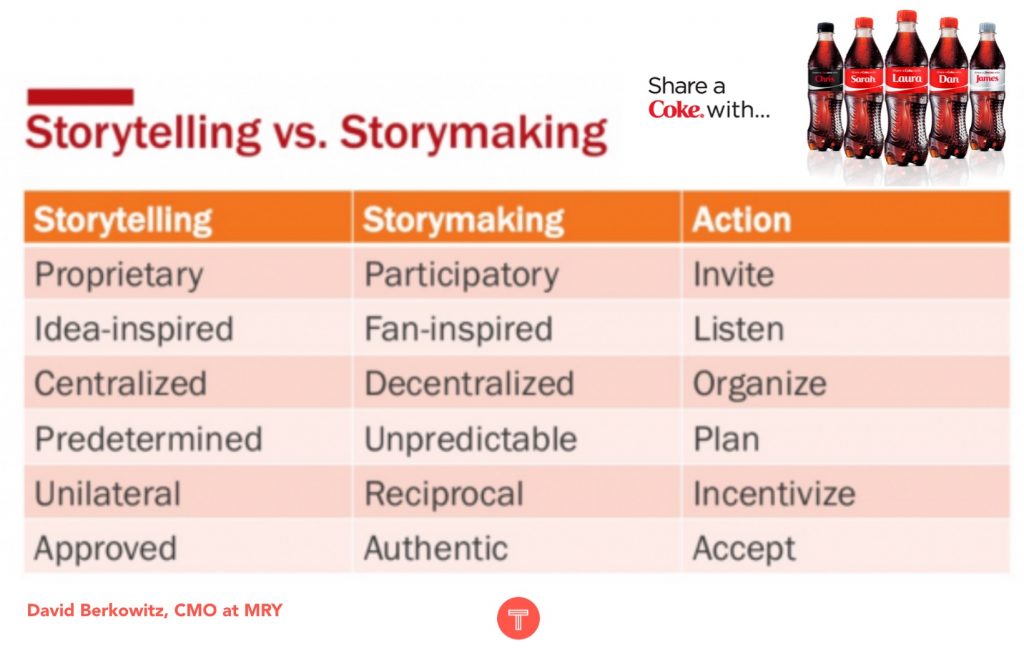
Instead of your traditional corporate storytelling that is fueled by proprietary, centralized, predetermined content, can we shift our mindsets to a more participatory, decentralized, and unpredictable storymaking with our customers?
I believe so, and we are starting to see some of the biggest brands in the world start. What are you waiting for?
Drop us a line if you want to strategize about how you can harness your best customer content into your brand story.

